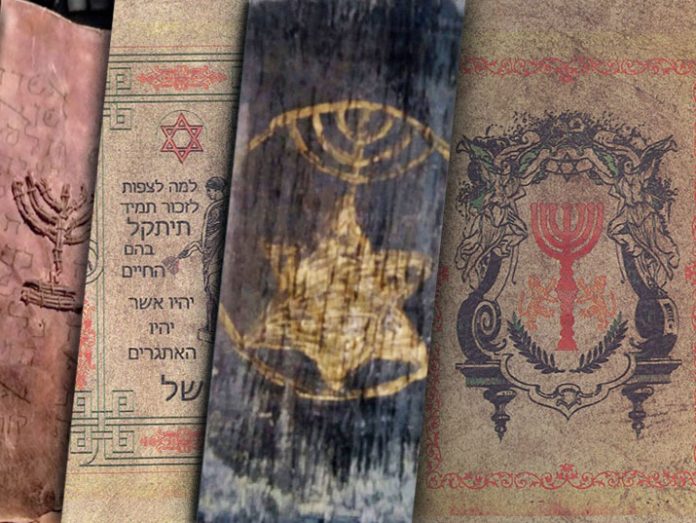The antiquities dealer was a tall bearded man, with light brown hair and glasses. At first glance, he appeared, in name and demeanor, to be like any other Eastern European Jew, but Moses Shapira would soon find himself at the epicenter of the most notorious case of Judaica forgery in the 19th century.
Shapira was born in 1830 in, what was then, part of Poland. He converted to Christianity in his 20s and immigrated to Jerusalem, where he worked as a shopkeeper selling local and religious souvenirs. Shapira became fascinated with biblical antiquities after witnessing the excitement over the discovery of a famed ancient tablet known as the Moabite Stone, or Mesha Stele, which referenced the lives of Jews from the perspective of King Mesha of Moab in the ninth century BCE. This find was the first discovery of a historical source, other than the Torah, to confirm accounts of that time. And it unleashed a strong desire to uncover more of its kind.
Shapira saw an opportunity and grabbed it. He transitioned to dealing in antiquities; some were genuine, but many were fakes.
Many phony Moabite relics that he produced were snapped up by museums and collectors alike. When he was ultimately confronted with his deceit, Shapira claimed that an Arab guide and translator he worked with was the culprit, and thus he was able to continue with his business.
But in 1883, Shapira’s luck ran out. He produced a sensational find: a set of 15 leather strips with what appeared to be part of a non-masoretical version of Sefer Devarim. The script, written in Paleo-Hebrew, or Ksav Ivri, was not the correct Sefer Devarim. Its version of the Aseres Hadibros (the Ten Commandments) had an 11th mitzvah: “Lo sisna es achicha bilvavecha”—don’t harbor hatred for your brother in your heart.
This would have been the oldest fragment of pesukim (or neo-pesukim) in existence. The only problem? Scholars immediately began to question whether the Shapira Strips, as they were dubbed, were a forgery. First, French archaeologist Charles Simon Clermont-Ganneau, who had already accused Shapira of forging his Moabite relics, declared that these strips were a fake. Then, the British Museum, which was considering purchasing the strips, had Bible scholar Christian David Ginsburg—another Jewish apostate—examine them. He proclaimed that Shapira had merely taken an ancient Torah scroll and used a blank section to create these strips.
Shapira was so humiliated by the controversy that he fled to Rotterdam, Holland, in 1884, where he then killed himself.
Modern scholars have occasionally revisited the idea that the Shapira Strips were genuine. For some, the discovery of the Dead Sea Scrolls—discovered in the desert not far from where Shapira had claimed his strips had originated—suggested that Shapira’s find may have in fact been authentic. But most scholars still view them as a hoax, and because the strips themselves disappeared after 1889, there hasn’t been any conclusive way to test them using modern techniques.
Although the Shapira Strips are one of the most infamous cases of Judaica forgery, there are many other instances of frauds that took place on both a large and small scale. As recent as February, Interpol released a notice warning consumers of a thriving forgery market centered in the Middle East that is churning out numerous fraudulent “ancient Jewish” items.





















